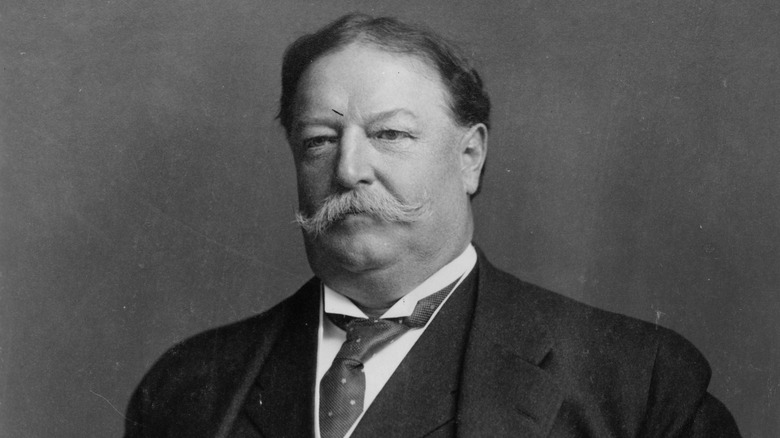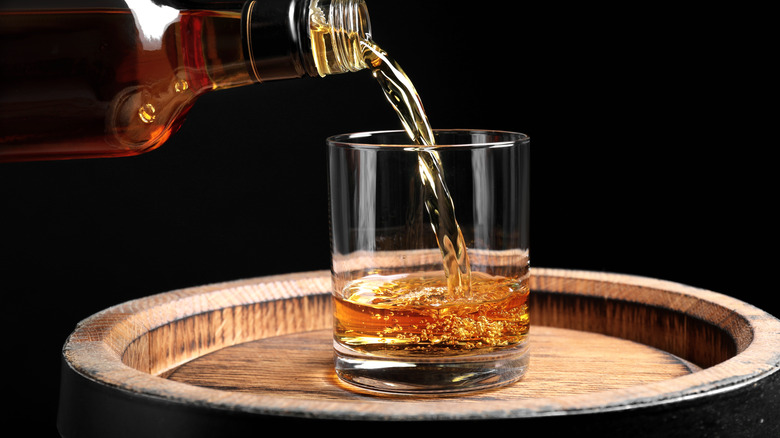How President Taft Helped Define The True Meaning Of Straight Whiskey
He had a magnificent mustache, he was born in Ohio, and he changed the whiskey industry forever. 27th U.S. President William Howard Taft was a huge fan of she-crab soup, "possum and taters," and buttered steak for breakfast. But, thankfully for modern whiskey lovers, part of the famous gourmand's tenure in the Oval Office included huge, lasting strides for the spirits industry. No American was going to drink bilge on his watch — at least, not without knowing it's bilge to begin with.
The first major regulatory legislation on the whiskey industry came in 1897 with the Bottled-in-Bond Act, which ruled that bourbon whiskey must be bottled at 100-proof, be aged for at least four years, and be made during a single distilling session. Shortly thereafter came the Pure Food and Drug Act of 1906, which required alcohol to list its ingredients and ABV on the outside of the bottle. Specifically about whiskey, the Act dictated that whiskey must not exceed 80% ABV when bottled, be aged for at least two years, and be distilled from a fermented cereal grain mash bill.
Still, these Acts left consumers with some lingering questions — namely, "What is whiskey, actually?" President Taft stepped in to answer. In 1909, Taft ruled that "straight whiskey" is unadulterated regular whiskey, with only water added to dilute for an accessible ABV. Also, said Taft, that whiskey must also contain 51% corn in the mash bill and be aged in new charred oak barrels.
Taft ruled that straight whiskey was liquor and water, and nothing else
President William Howard Taft's decision was an improvement on the Pure Food and Drug Act, determining what could be legally added to whiskey without altering the spirit beyond the parameters of "still being whiskey." Distillers often add water to whiskey to achieve the industry standard 40% ABV, because the liquor can be as strong as 62.5% ABV at the time of barreling.
At the time, Taft's decision was headline news. An article in the Los Angeles Herald from December 27, 1909, the day the president's decision was announced, reads, "Taft Decides [Whiskey] Must Be Classified ... neutral spirits must be so branded. [Whiskey] is [whiskey], President Taft has at last decided. It is [whiskey] when made of neutral spirits, says the president, if reduced to potable strength. But it must be branded so that those buying it may know just what they are getting."
The former president's ruling has since been expounded upon by further legislation. Per Senate Concurrent Resolution 19, which was passed in 1964, for a spirit to be classified as bourbon, it must be made in America. The timing of the groundbreaking legislation was a drag considering Prohibition hit in 1920. But, it remains a crucial, now-assumed part of the whiskey industry, protecting product quality and guiding fans. (Remember the illegitimate Pappy Van Winkle black market that was selling bottles on Facebook in the 2010s? Taft's legislation was the thing that made that not okay.)

